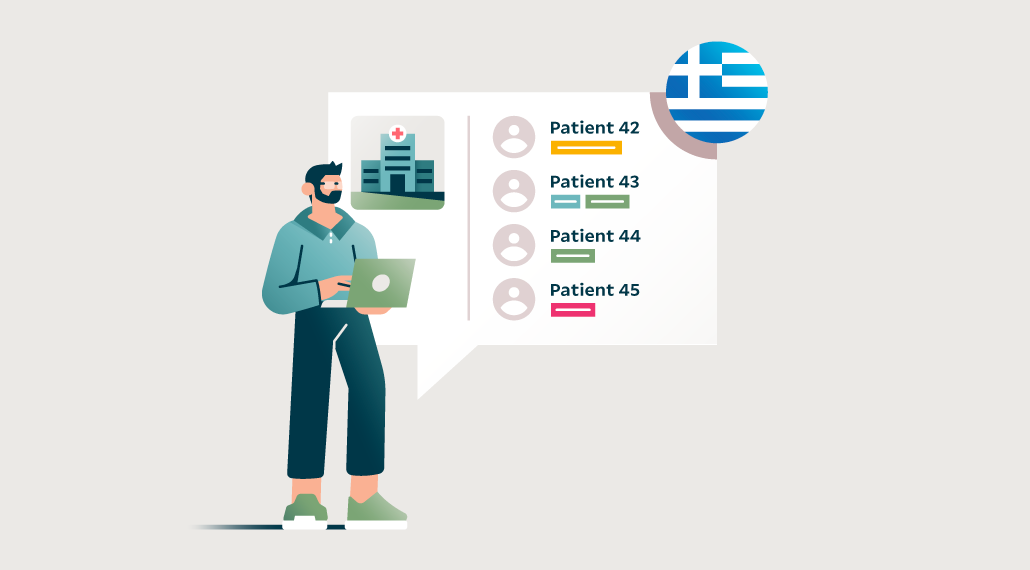September 26th, 2022
Top Ways for Sponsors to Analyze and Improve Protocol Feasibility
By OneStudyTeam

Every sponsor should invest in protocol feasibility analysis when launching a clinical trial. They can prevent wasted time and resources by evaluating a protocol for potential risks to a trial’s success, such as recruitment and enrollment barriers. To avoid preventable bottlenecks or shortcomings in recruitment, enrollment, and trial processes, sponsors should take a closer look at factors built into a protocol that could influence enrollment before a trial is underway.
Ready to make an assessment of the feasibility of your clinical trial protocol? Here are top ways to analyze feasibility – and to improve your plan.
Get flexible with pre-screening and screening parameters
- Balance inclusion/exclusion criteria to expand the pool of potential participants
Inclusion and exclusion criteria are a primary way to ensure that a study population is scientifically appropriate and can safely participate in trial procedures. But developing these criteria requires a careful balance — lenient criteria can put participants at risk and compromise study integrity, while stringent criteria can limit the pool of potential participants and slow down the enrollment process.
When developing inclusion/exclusion criteria, consider the size of the accessible study population in relation to the phase, size, and therapeutic area of the trial and adjust accordingly. For example, if you need a large participant population for a trial, consider broadening the eligible age range to increase the pool of potential participants. In conjunction, consider incorporating specific health criteria (such as limiting or eliminating comorbidities) to reduce the effect of age-related health risks during the study.
Particularly within a small population of interest, it is key to leverage inclusion/exclusion criteria to maximize inclusivity while maintaining the safety and integrity of the trial. For instance, many oncology trials require a washout period of several weeks before starting study procedures. However, for many patients, spending days off treatment is unrealistic. Sponsors should be as flexible as possible when setting criteria.
- Look carefully at screen failure rates and consider re-screening
Based on inclusion/exclusion criteria and the accessible participant population, you can determine the expected screen failure rate for your study. If possible, provide opportunities for some failed candidates to re-screen within a specific time frame to make the most of a limited potential candidate pool and increase trial access.
For example, if inclusion is dependent on specific lab values, consider allowing re-screening if a candidate’s labs may change over a reasonable period of time. Think about implementing pre-set checkpoints throughout enrollment to reassess the screen failure and enrollment rates. Then, adjust overly restrictive re-screening requirements. This allows interested candidates to be considered, without the burden of seeking out new candidates for the study.
- Assess demands of required screening procedures
Screening procedures are necessary for accurately assessing eligibility criteria. But some parameters can feel excessively demanding for candidates who might not ultimately be eligible. Consider the time required for screening procedures and the invasiveness or potential discomfort associated with them. If it is not realistic to require every candidate to undergo these procedures, update screening requirements to add convenience for participants. Make sure your procedures are essential to the safety and success of the trial and not just implemented out of habit.
Many hematology trials, for instance, require a bone marrow biopsy to assess eligibility. But patients in this area often undergo the procedure regularly. Sponsors can permit the submission of recent bone marrow results (within a certain window) for trial eligibility. This can save patients the pain and stress of undergoing another biopsy and save material costs and time for the trial. Closely assess criteria and seek input from site staff and principal investigators to reshape screening procedures in a way that supports both site and sponsor needs.
Limit competition among trials and sites
- Expand your list of sites if needed
When you are selecting sites and setting enrollment goals for a study, look into the other trials that will be underway and actively recruiting at the same time as your trial. Consider whether your study requires a different pool of candidates from other studies across sites. Is there an adequate population of potential candidates to support both trials? This knowledge can predict excessive competition for an overlapping participant population and inform updates to recruitment and enrollment goals when necessary. If competition is a concern, think about expanding to sites in different regions or to less-experienced sites with the capacity to support your trial.
- Manage patient slot allocation in trials with slotting
Multi-site and early phase clinical trials with slot-based enrollment can face more complex competition among trial sites. Plan to balance the allocation of slots in a trial cohort across different trial sites and regions. Doing so can ensure that more active, resource- and time-rich sites do not overtake slots from smaller sites. Often, smaller sites cannot efficiently recruit and screen as many participants or they take longer for site activation or IRB approval.
Additionally, for global studies, allocation of slots can often favor sites in the same geographic region or time zone as trial leadership. Integrate protocol mechanisms that balance slot distribution both qualitatively and quantitatively. For example, consider the time of central slot release and site responses relative to local time zones to increase global trial accessibility.
Thoughtful allocation of study slots across different areas is not just a matter of competition — it opens the door to a broader diversity of social, racial, and medical backgrounds, which will more accurately reflect real-world behavior of an investigational product.
Anticipate geographical and cultural effects on the protocol
- Assess the global incidence of a condition
Geographic variability in the prevalence of a condition can inflate the pool of potential trial participants in certain places and shrink it in others. When selecting sites and setting enrollment goals and timelines for global trials, examine the accessible population of interest across different regions and plan accordingly.
Beyond consideration of disease prevalence in a region’s local population, assess the diaspora of the population to other regions to guide site selection and enrollment goals. For example, a sponsor running a trial for a condition with a high prevalence in Asian countries, such as hepatocellular carcinoma, may want to select Brazil over France for additional sites based on the magnitude of Japanese diaspora within Brazil.
- Be sensitive to how cultural implications of clinical trial participation impact candidates
Participation in a clinical trial is a personal decision that can be shaped by cultural norms and attitudes. Trial participation often demands significant time commitment and potentially invasive procedures that could be perceived differently across cultures in a global trial context. Patients may be hesitant to seek care or undergo certain procedures due to cultural stigma. In Uganda, there is a stigma around women who receive a breast cancer diagnosis. Patients may also be wary of clinical trial participation due to historical abuses in the space. In the U.S., Black men were once left untreated for syphilis so researchers could study the long-term effects of the disease.
In developing recruitment tactics and goals, sponsors must take a nuanced approach and seek information and guidance from local experts. This level of knowledge is foundational to developing culturally intelligent marketing materials, recruitment efforts, and study procedures (such as interview questions posed during screening).
Make sure site staff have adequate resources
- Account for available resources and equipment
For multi-site trials, sponsors can ensure that sufficient resources are available for all sites to carry out protocol procedures. To start, all essential materials such as protocol documents and consent forms should be readily available in sites’ local language(s).
If procedures require a specialized imaging modality or another dedicated instrument, ensure that sites – big and small – have access to this resource to support the logistical demands of the study. For instance, a trial may need an MRI or specialized testing such as next-generation sequencing (NGS) for screening, but also require that participants complete screening procedures within a certain time window. Seek feedback from sites to ensure that timelines accommodate a site’s realistic capacity for scheduling and turnaround of results. For less specialized procedures (such as an EKG), consider providing a dedicated instrument for trial use.
- Ensure there is adequate staffing at a site
Even simple protocols cannot be executed without the right personnel in terms of numbers and level of expertise. Ensure a site’s staff is able to perform procedures in a timely manner for all expected participants. For example, some studies mandate that certain procedures or examinations be performed by a licensed physician rather than a nurse practitioner. If possible, be flexible with these requirements to help sites with limited staffing resources continue to meet screening and enrollment expectations.
- Ensure sites have access to technology that can help them easily manage the patient visits built into the protocol.
No matter the trial, sites are responsible for gathering extensive patient source data after informed consent and through the treatment phase. The more complex the protocol, the more likely it is that protocol deviations can occur. eSource technology can help sites more effectively capture and manage source data while increasing accuracy and reducing the risk of protocol deviations. For example, eSource technology can be configured with pre-made templates and validation settings that support improved legibility and can flag keystroke errors.
Work to reduce patient burdens
- Be mindful of the length of a trial
Some trials require several years of participation and follow-up, which may be daunting for potential candidates and ultimately lead to attrition. When planning, try to establish realistic participation and follow-up timelines, and ensure that enrollment goals account for expected attrition during study and follow-up periods. Consider offering opportunities for remote follow-up or follow-up with a patient’s local physician. Additionally, to support retention, make sure patients are educated on the projected timeline and why their adherence is so critical for their own care and to the trial's success.
- Compare your trial to standard of care
For many patients, clinical trial participation can offer greater access to care and potentially better therapeutic options. However, it is critical to realistically consider how intense, demanding, or invasive procedures are relative to the standard of care (SOC). Additionally, SOC can change over time and vary from country to country, potentially posing issues in a global, multi-year trial. Regularly monitor changes in SOC in comparison to the protocol throughout the trial.
The possibility of randomization to a placebo group could also deter participants from trial participation. In studies with a placebo group, ensure that patients have otherwise equal and comprehensive care and provide access to the study therapy after completion.
- Offer support to vulnerable patient populations
Some research, such as pediatric trials or dementia studies, unavoidably involves the participation of vulnerable populations. Researchers can aim to keep caregivers reliably engaged to ensure optimal care and respect for participants without over-burdening caregivers with additional duties and stress.
- Make the patient experience realistic
Sponsors can strike a balance between flexibility and strict adherence when considering how the requirements of trial participation affect participant experiences. Are participants required to adhere to strict changes (such as not drinking alcohol, eating certain foods, or smoking)? Are there severe expected side effects of the study therapy? Are the logistical and financial demands of study participation realistic?
Supportive lifestyle resources, such as access to a free online smoking cessation program, can appeal to participants and help them adhere to trial requirements. At the same time, providing transportation or remote care options to patients with long travel times can limit barriers to clinical trial access.
Look at protocol feasibility from all angles
A comprehensive assessment of the feasibility of your clinical trial protocol is time-consuming, but it's valuable to factor it in to your clinical trial enrollment strategies. And it's a critical investment in trial planning that can save time and resources later on. Consider participants' individual experiences and the unique resources available at different sites to plan realistic enrollment goals and timelines.
This process may sound like an exercise in predicting the future, but you can use insights from StudyTeam, our innovative platform that connects sponsors and sites, to guide every step of your study setup, including protocol evaluation. Track extensive data from global sites across therapeutic areas to gain a better picture of what has and has not worked in recruitment and enrollment. Also, identify what factors may be affecting decisions to participate. Learn more about how sponsors can set trials up for success with StudyTeam.
Related Posts

How Does a Trial Manager in Greece Improve Clinical Trial Operations with StudyTeam®?
Dimitris Tziogas, local trial manager at a biotechnology company in ...
Read More
How to Address Key Clinical Trial Challenges, According to Clinresco Centres in South Africa
There’s no single solution to overcoming a research site’s specific ...
Read More
3 Clinical Trial Billing Challenges Research Sites Solve with StudyTeam
Challenge 1: Complicated coverage analysis Challenge 2: Tedious budgeting ...
Read More



